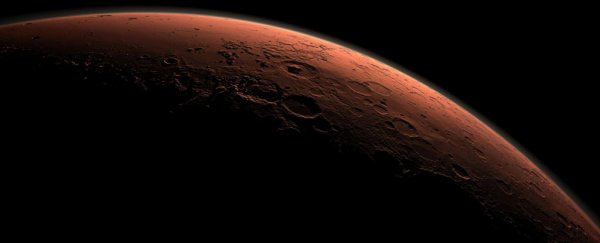While the harmful effects of cosmic rays on human physiology might be one of the greatest barriers to our exploration of the Solar System, for other organisms, that radiation could actually be a meal ticket.
That's the thinking behind a new study, at least, which suggests that life forms on other planets might be able to subsist on the energy provided by cosmic radiation alone.
While it sounds pretty out there, astrobiologist Dimitra Atri from the Blue Marble Space Institute of Science in Seattle drew the inspiration for his hypothesis from a very down-to-earth real-life organism.
In fact, the bacterium Desulforudis audaxviator is beyond down-to-earth. This bug, discovered in South Africa in 2008, actually lives some 2.8 kilometres (1.74 miles) below Earth's surface, where it lives off hydrogen and sulphate produced by the radioactive decay of uranium and other rocks underground.
Whereas the vast majority of organisms on Earth are sustained by photosynthesis either directly (like plants) or indirectly (like animals that eat plants or each other), D. audaxviator demonstrates that "alternative mechanisms for harvesting available energy" also exist, Atri writes in his paper.
"It really grabbed my attention because it's completely powered by radioactive substances," he told Jessica Boddy at Science. "Who's to say life on other worlds doesn't do the same thing?"
While the radiation that helps keep D. audaxviator alive on Earth stems from rocks underneath the surface, the same principle could be at work in space, Atri says, where galactic cosmic rays interacting with other matter could hypothetically provide an energy source to organisms on other planets.
On Earth, we're largely shielded from the highly energetic particles that make up cosmic rays due to our planet's protective magnetosphere, but on planets with thin atmospheres and no magnetic field of their own – such as Mars – radiation would be ample to sustain very tiny life forms, Atri thinks.
To test his hypothesis, he ran simulations to see whether small organisms much like D. audaxviator could live off cosmic rays on the Red Planet, plus the Moon, Pluto, Europa, Enceladus, and comets.
In these environments, the rays striking a planetary surface would produce secondary particles, which Atri says would be capable of producing the energy to do things like split water. This would provide a potential food source for any tiny life forms living underground (where they'd also be shielded from the worst of the radiation).
But they'd have to be tiny to get by on this energy source, and with very slow metabolisms.
"The energy itself is so small, and because of the high radiation, the organism would have to spend a lot of energy repairing damage from radiation," Atri told Sarah Fecht at Popular Science. "It uses a lot of its energy in this process."
And the amount of cosmic rays would probably need to occupy a sweet spot between not too high, nor too low, as either extreme could wipe out any alien bugs.
"Life forms like this want a steady flux of energy from cosmic rays, but not so much that it's damaging," astrobiologist Duncan Forgan from the University of St Andrews in the UK, who wasn't involved with the research, told Science. "They might not be able to cope with a huge bout of radiation that pops in."
While we'll have to wait and see what the rest of the astrobiology community thinks of Atri's hypothesis, if the numbers turn out to be correct, it means we could hypothetically find life in all sorts of places in the Solar System and beyond – even in environments we otherwise might have ruled out due to their thin, airless atmospheres.
"It's funny," Atri told Science, "because when we look for planets that contain life currently, we look for a very thick atmosphere. With these life forms, we're looking for the opposite."
The findings are reported in the Journal of the Royal Society Interface.
